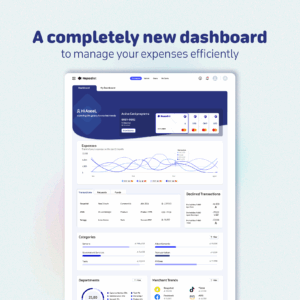An employee expense policy is a crucial document that outlines the rules and guidelines for employees regarding business-related expenses. A well-defined expense policy ensures consistency, accountability, and compliance within the organization. A bad expense policy is not only bad for business but also for employees, as a report found, 2 in 5 employees have experienced cash flow issues due to slow expense reimbursement.

Here are the essential steps to develop a comprehensive and effective employee expense policy. While these steps do not shield you completely from all the challenges that manual expense management brings, they set you off on the right path:
- Define what expenses are eligible for reimbursement
This includes identifying the types of expenses that will be reimbursed, as well as any limits or restrictions on those expenses. For example, you may decide to reimburse employees for travel expenses, meals, and entertainment, but only up to a certain dollar amount per day or per expense category.
2.Set clear guidelines for submitting expenses
Here, you focus on specifying the documentation that must be submitted with each expense claim, as well as the timeframe for submitting claims. You should also specify who is responsible for approving expense claims.
3.Choose a method for reimbursing employees
There are a number of different methods for reimbursing employees, such as direct deposit, check, or credit card reimbursement. You should choose a method that is convenient for employees and that is easy to track for your business.
4.Train employees on the expense policy.
It is important to make sure that all employees are aware of the expense policy and how to submit expense claims. You can do this by providing employees with a copy of the policy, holding training sessions, or creating a FAQ document.
5.Review and update the expense policy regularly
As your business grows and changes, your expense policy may need to be updated. You should review the policy regularly to make sure that it is still relevant and effective.
Additional tips for developing a good employee expense policy
- Keep the policy simple and easy to understand.
- Be clear about the purpose of the policy.
- Be fair and consistent in your application of the policy.
- Make sure the policy is in line with your company’s culture and values.
By following these steps, you can develop an employee expense policy that is clear, fair, and effective. This will help to ensure that your employees are reimbursed for their legitimate expenses in a timely manner, and that your business is protected from fraud and abuse.
While these steps create a strong base for better expense management, there’s a key step that can really make everything work even better. It’s like finding a special key that unlocks all the benefits. This step involves using a smart digital tool for managing expenses and making business payments using company cards. It helps keep track of things in real-time, checks automatically, and makes things run smoothly. With a digital solution, you control more and do less.
In simple words, as you work on improving how your employees handle expenses, remember that you’re on a path of giving them more power and responsibility. It’s like showing how much you care about your team and your business. When you show everyone your new expense policy, along with the right tools to keep the policy in check, you’re making things work together like a perfect orchestra. It’s all about being efficient, fair, and secure with your money in your company.





